Belchite is a small village located in northeastern Spain, in Aragón. If you want to learn more about the Spanish Civil War, it’s a must-visit destination. You’ll be able to experience it firsthand, as it was the site of one of the war’s most symbolic and bloody battles.
The town is about 45 km from the provincial capital, Zaragoza, in the Comarca del Campo de Belchite and on the Ebro river bank. It’s a one-hour drive from the city centre and can be easily reached by bus, car or organised tour services.
Belchite Before the War
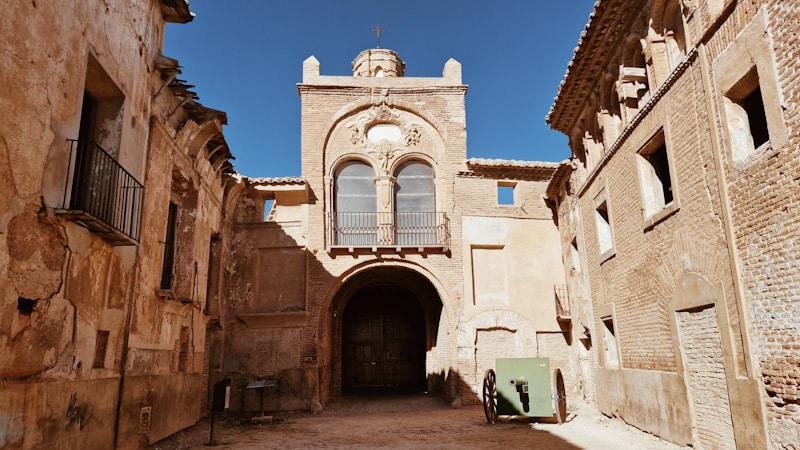
Belchite’s history is both long and fascinating. With early human settlements dating back to 75 AD, the area was thriving before the outbreak of the war. Over the centuries, several impressive medieval and Mudéjar churches and monuments were built in the town.
During the Middle Ages, Belchite, then known as Belsid, was a Moorish town until 1118, when Christian king Alphonse I of Aragón conquered it. After the Middle Ages, the place started to develop economically and became a prosperous centre for agricultural production. The population was made up of Christians, Muslims, and Jews. The city became a royal town in 1430 and a secular manor two years later when it was sold to the duchy of Hijar by Queen María. Ferdinand I created the County of Belchite in 1498.
During the economic flourishing of Belchite, different monuments, such as the San Roque and the Villa arches, as well as different churches (San Martín de Tours and San Juan) and convents, including San Rafael and San Agustín, were built. Belchite became a predominantly Mudejar and Baroque town.
From the 19th century onwards, Belchite suffered a period of decline. It was at the heart of numerous battles, including the 1808 Battle of Belchite against the occupying French Army and during the Carlist Wars.
However, the Spanish Civil War sealed the fate of this formerly thriving Aragonese Town. Starting in 1936, several war events took place in Belchite, culminating in its total destruction and the decision of the coup leaders not to rebuild it.
The Spanish Civil War
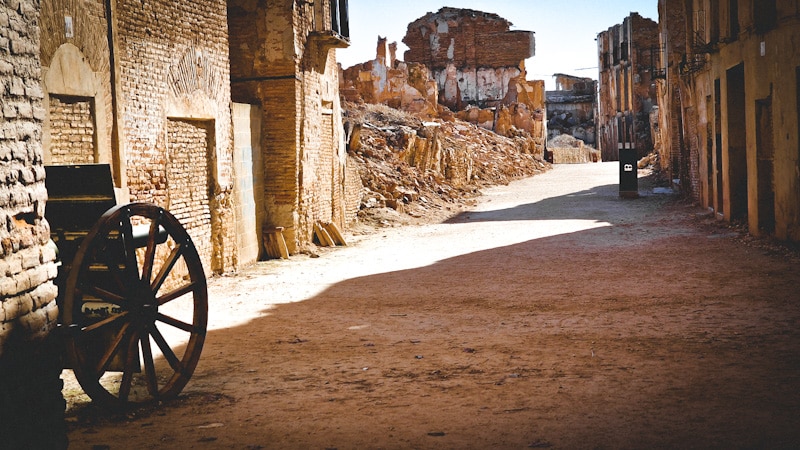
During the Spanish Civil War, which broke out in 1936, Belchite was the site of one of Spain’s bloodiest and most significant battles. The town, situated on the border between the Republican State and the fascist forces, was caught in the middle of the fighting.
The Nationalist army initially held the village after General Francisco Franco’s coup but was recaptured by Republican forces in 1937 following a fifteen-day siege that resulted in the destruction of the village. This event was a turning point in the history of the war and marked the beginning of the end for Belchite.
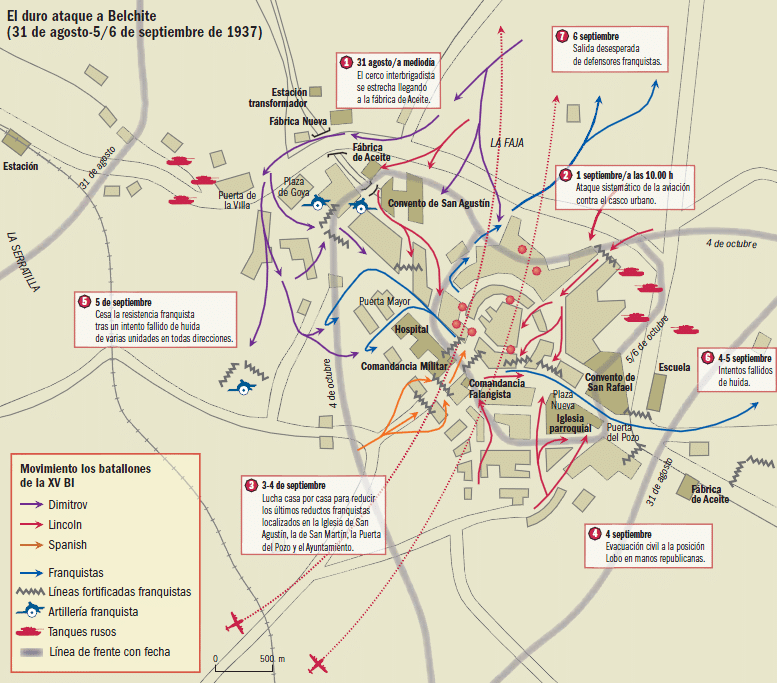
In the summer of 1937, the Republican command launched an offensive on the Ebro front, intending to take Zaragoza and divert troops from the northern front. The conquest of Belchite was proposed between August 24 and September 6, 1937.
Several thousand Francoist fighters had gathered in Belchite led by the commander and town mayor Alfonso Trallero. Franco’s troops were well equipped to resist a long siege, but the Republican Army decided to assault the village. There were tough street battles amid the intense heat of the Aragonese summer. Water was cut off, and the lack of food and medical supplies began to take its toll as the intensity of the fighting increased.
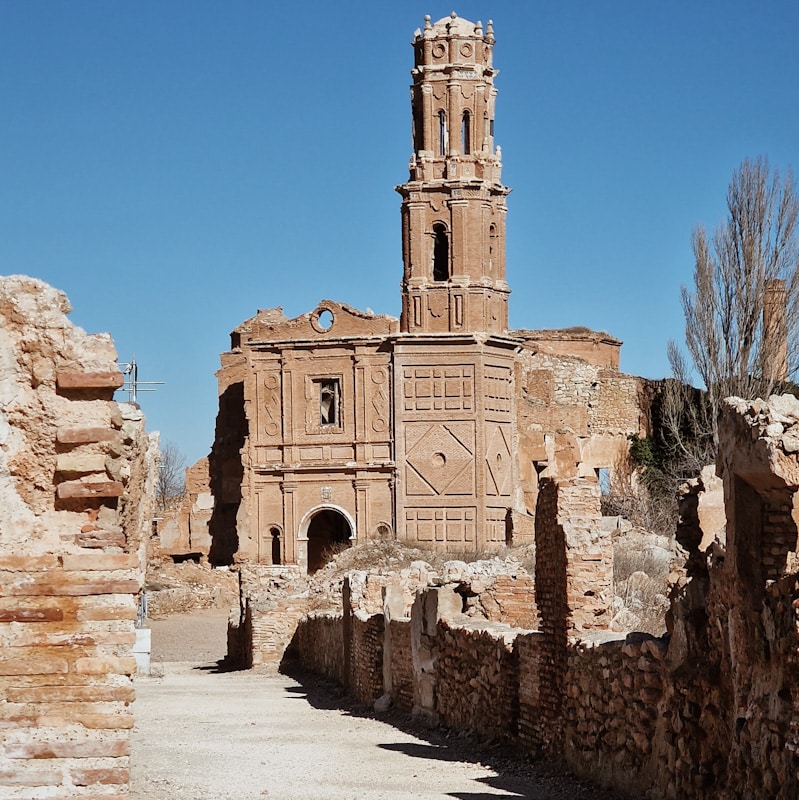
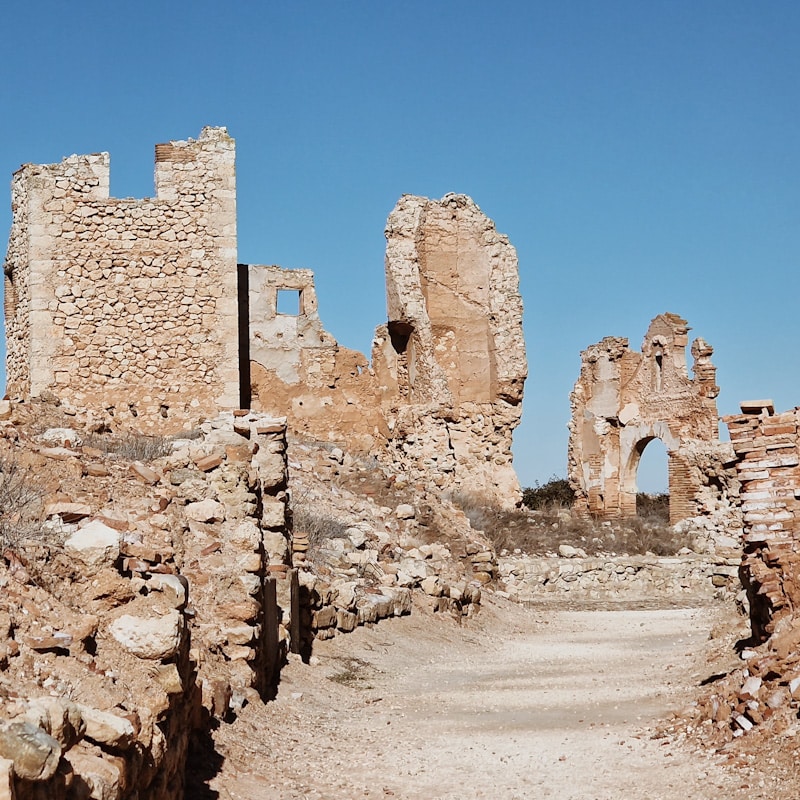
The Battle of Belchite ended with 5,000 casualties between the two contenders. The town was almost completely destroyed, its ruins remaining unrestored at Franco’s express wish as a reminder for future generations of the horrors of war and the perceived excesses of the Republican side.
After 1939, a new town was built near the ruins of the old one.
Belchite Today
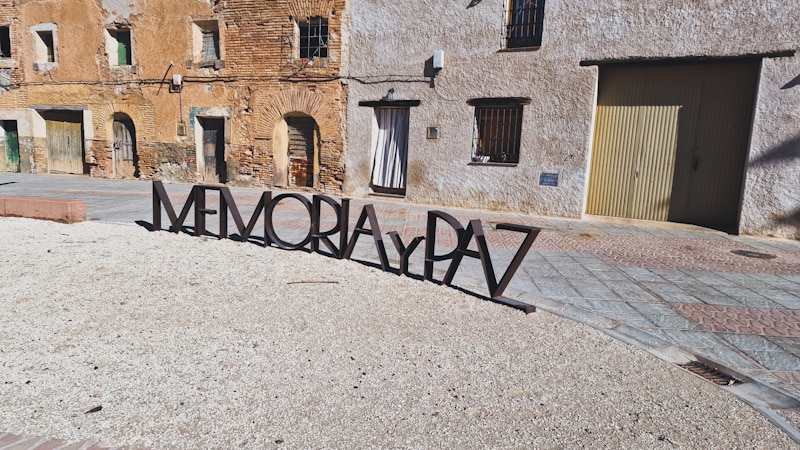
Today, the Old Town is still there, but rather serves as a reminder of the futility of violence and its human cost. While parts of Belchite have been rebuilt, and the town has a population of 1,600, many parts remain as they were during the war.
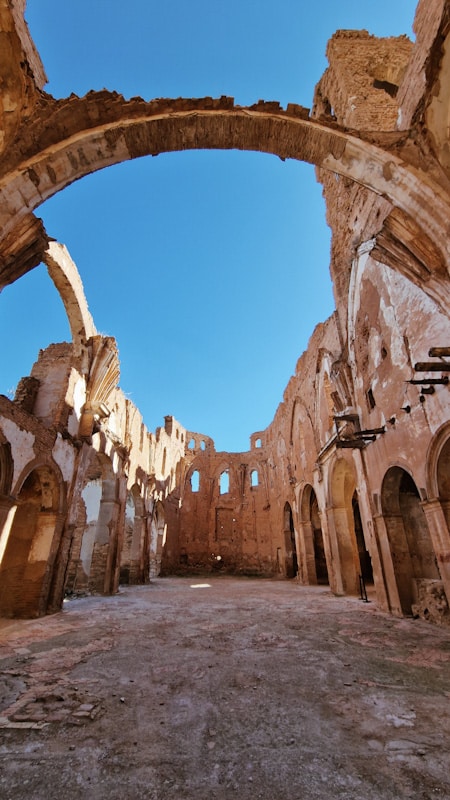
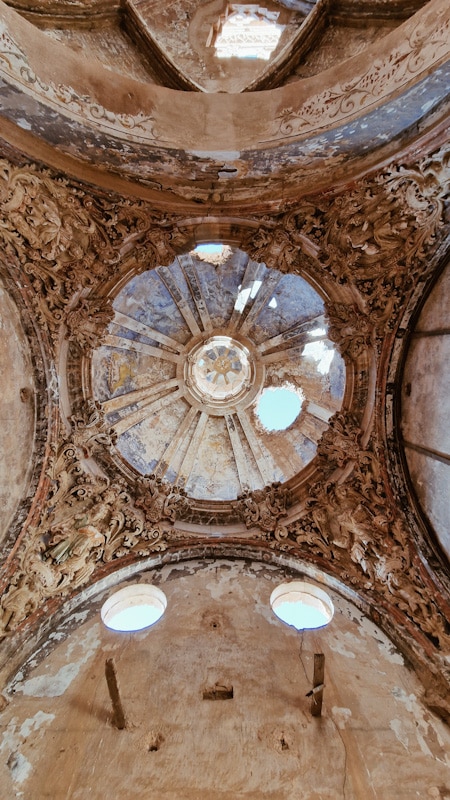
The remains of rubble, the shelling holes of the buildings, and the main church riddled with bullet marks are a stark reminder of the reality of war.
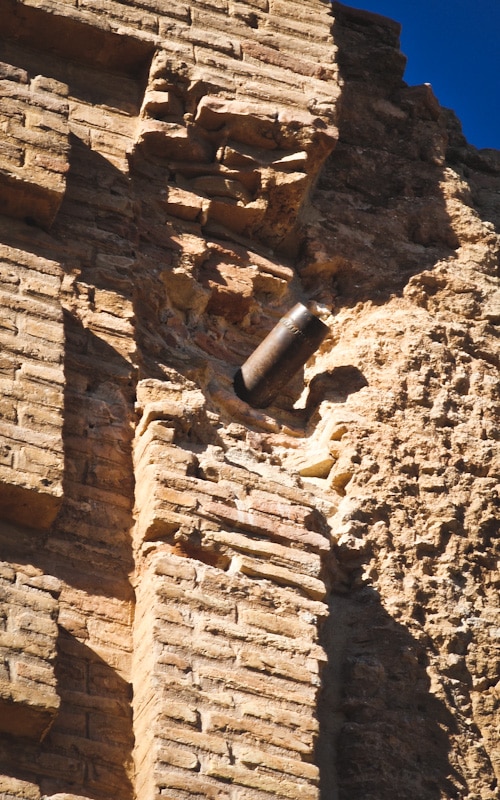
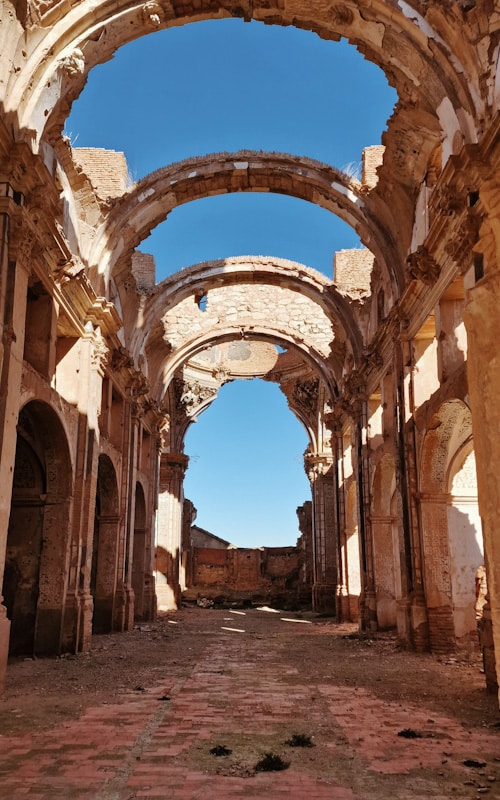
Today, the ruins of Old Belchite are used as the backdrop for period films such as Guillermo del Toro’s “Pan’s Labyrinth” and have become a relatively little-known tourist attraction.
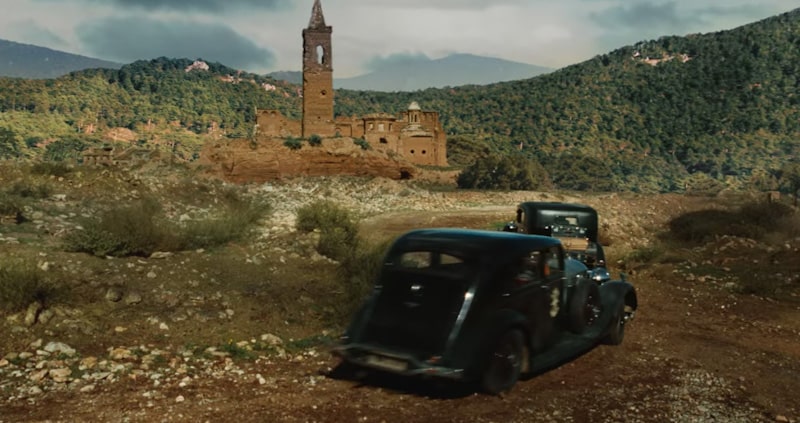
Things to See in Belchite
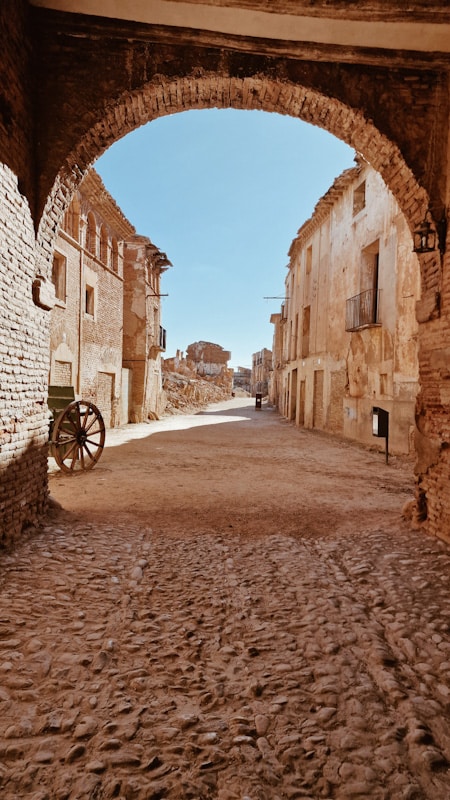
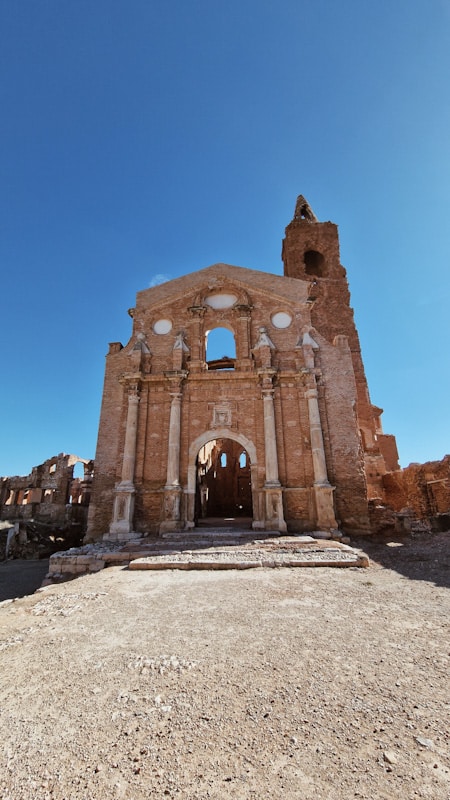
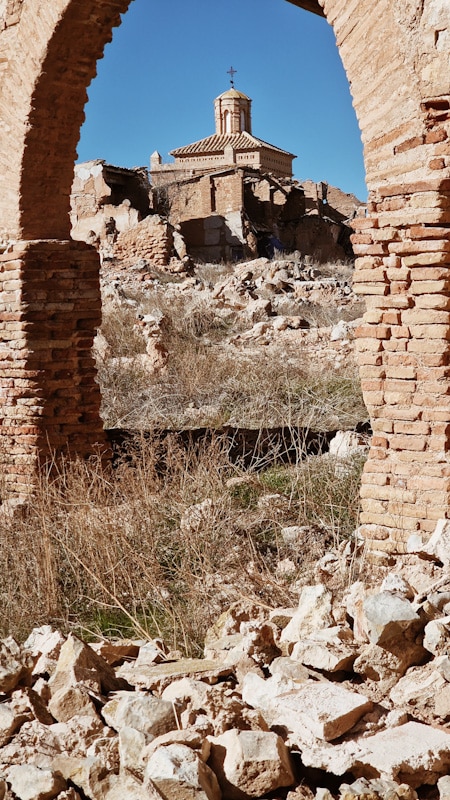
Today, the town has been closed off, and the only way to visit the ruins of Old Belchite is with a guided tour offered by the local tourist board.
There are two tours available; a daytime one, focusing on the village’s war-time history and a nighttime tour, which includes a paranormal component. After all, Belchite has been deemed “the most haunted village in Spain.”
Visits last approximately an hour and a half and include commentary by Belchite Turismo guides, descendants of the neighbours who inhabited the town. The stories and accounts have been compiled and contrasted with all the existing bibliography and documentation, including the official reports of both armies and oral tradition.
Some of the most important sights in Belchite include:
- Portal de la Villa
- Calle Mayor
- Plaza Nueva
- Casa de la Domi
- San Martín de Tours church
- Casa de los Arcos
- San Agustín Church
How to Visit Belchite Without a Car
Because it’s a small town and a relatively unknown tourist destination, visiting Belchite is much easier if you reach it by car. That said, you can also visit Belchite from Zaragoza by booking an organised tour.
Since we travelled without a car, we decided the organised tour was the best way to reach Belchite, and it was a wonderful experience.
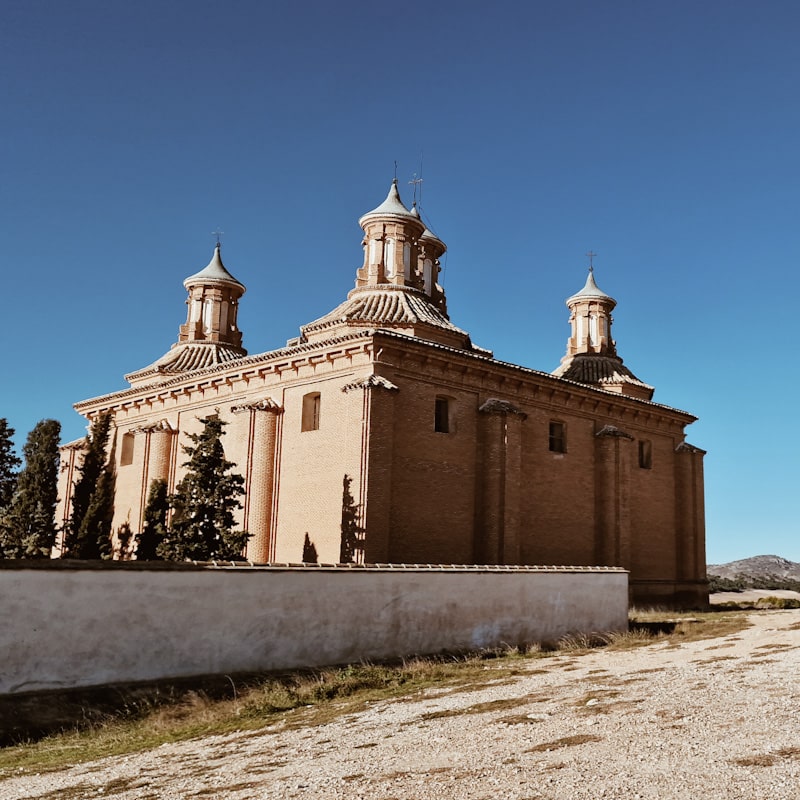
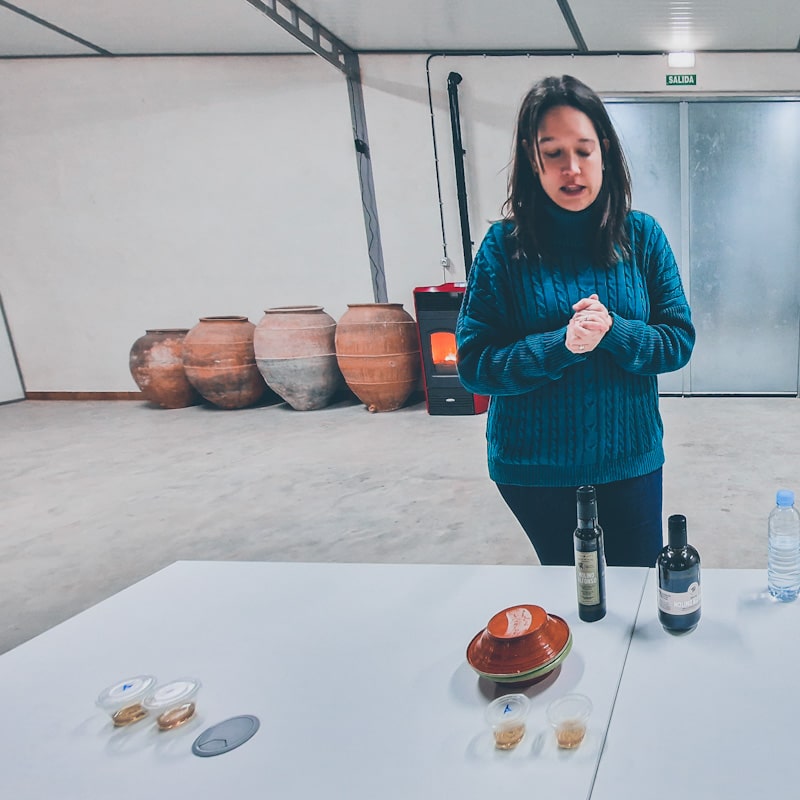
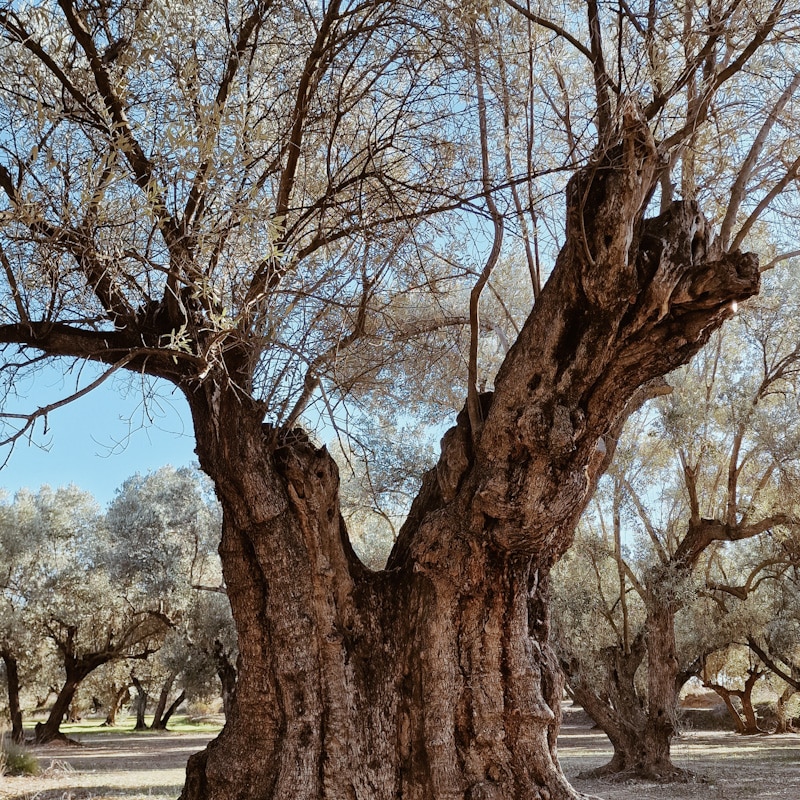
Other than the visit to the village, the guided activity includes a tour of an almazara, a traditional olive oil factory, and stops at an olive field and the Santuario de la Virgen del Pueyo.
Where to Stay in Belchite
Belchite is a small town with few places to stay, so you’re probably better off spending the night in Zaragoza. That said, these are the best-rated properties to stay in Belchite:
Read this post in other languages:
|ES| Visita Belchite: el pueblo fantasma destruido durante la Guerra Civil.



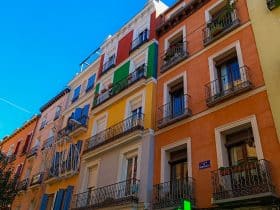
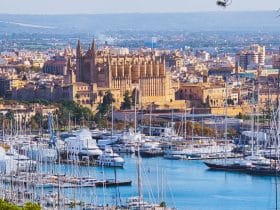
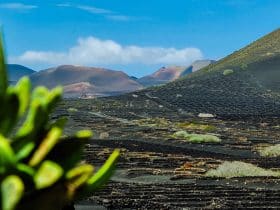
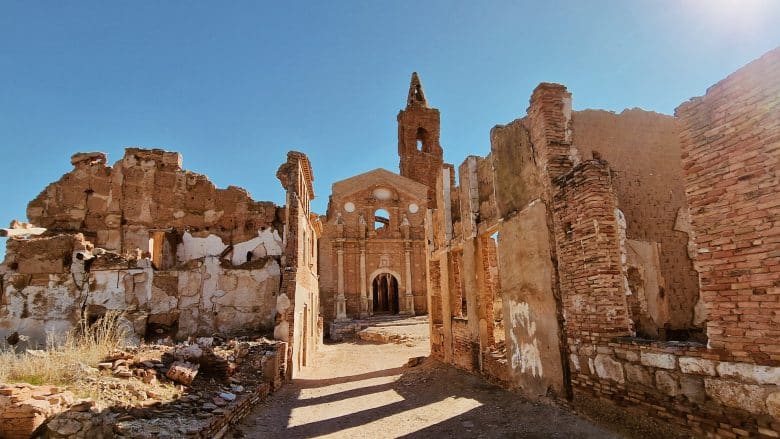
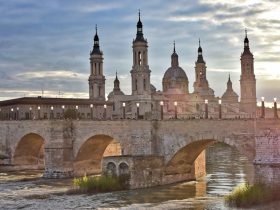
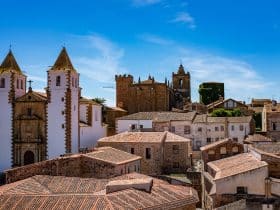



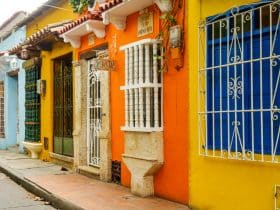












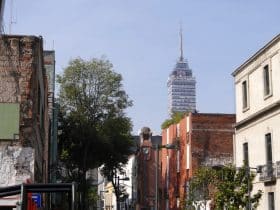
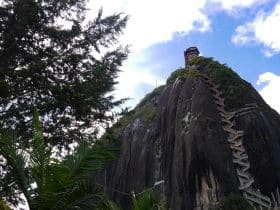
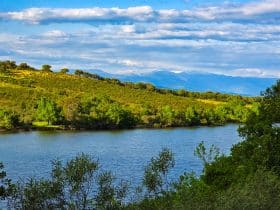
Leave a Reply
View Comments